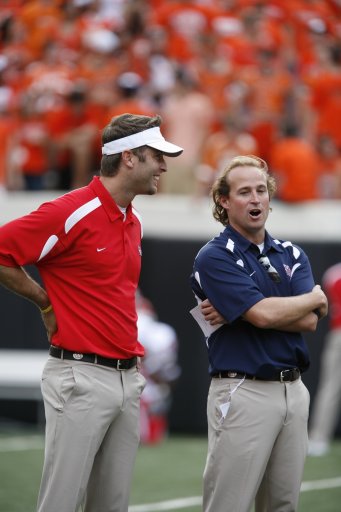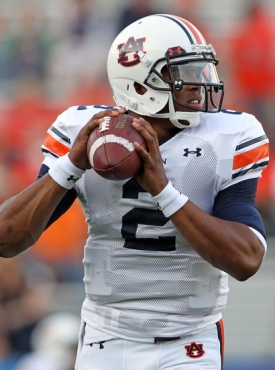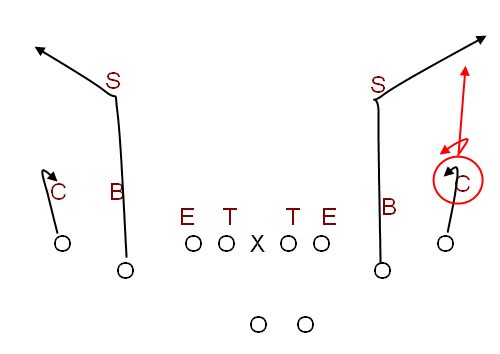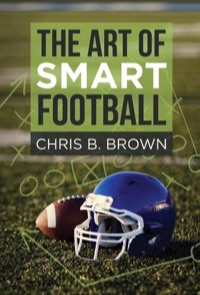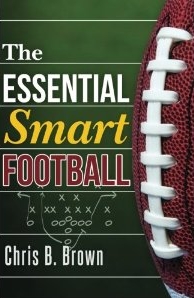LSU 47, WVU 21. The ultimate conclusion for this game was that, to paraphrase Dennis Green, both teams were who I thought thought they were: LSU is one of the best, toughest, most physical teams in the country, and my undisputed #1; and WVU is intriguing but extremely young on both offense and defense, a team that I have high expectations for but one that needs to grow up to have true success. I did think how they got there was extremely interesting, however. West Virginia outgained LSU by close to 200 yards, and, purely from a production standpoint, the vaunted LSU defense has to be extremely disappointed in itself and West Virginia has to know there’s not a team in the country they can’t light up. The biggest bright spot for WVU — and biggest surprise — was the fantastic pass protection Geno Smith received throughout the evening.

I'll take that ball please
But in a strange way if I was an LSU fan I’d be encouraged: Here was a game where my defense, the strength of my team, got eaten up for a gajillion yards, but I still won for three reasons: (1) LSU’s defense still grabbed four crucial turnovers; (2) LSU’s special teams dominated, particularly in the field position battle (the punter was amazing) and the timely kickoff return by Mo Claiborne; and (3) the offense made very few mistakes and was extremely efficient, hitting some big passes in the first half and grinding out the run game in the second. That’s the mark of a great team like LSU: they took an opponent’s best shot and were able to control and win a game with the other phases of their team. LSU will win a lot of games if they can keep up things like this:
Sometimes, it’s less obvious — such as, for example, the fact that LSU’s average starting field position tonight was its own 43-yard line, while West Virginia didn’t start a single possession past its own 29, and only then following the opening kickoff of the game. (For the night, WVU started eleven possessions inside its own 20-yard line; LSU started zero possessions inside its 20.)
For WVU it’s a little more disappointing because there were opportunities, especially considering that they pulled it to 27-21 despite having dug themselves an enormous first half-hole. But the good news for the Mouintaineers is that what did them in last night — against what is in my view the best team in the country — were all fixable mistakes. Indeed, both of Geno Smith’s interceptions were not of the “bad read” variety, with the first being a ricochet off of a dropped pass and the second a bad decision to throw a quick lateral screen despite the presence of Tyrann Mathieu (after the game Holgorsen said Smith had the option to hand the ball off if he didn’t like the look of the screen). And while West Virginia’s special teams must improve, one reason that very talented teams have great special teams is because their rosters are deep. There isn’t anyone in the Big East that will present those kinds of challenges.
Ultimately, both teams have a lot of upside: For WVU, it’s to potentially run the table in the Big East and make a BCS game, while for LSU, it’s to solidify its spot as the best team in the country and to win Miles’s second National Championship. LSU has a big game coming up with Florida, but I can’t help look forward to November 5th, when the Tigers travel to Tuscaloosa to play Alabama. That game might have more BCS title implications than any other this season, including the bowl games.
– Alabama 38, Arkansas 14. I love Bobby Petrino’s offense, and it’s typically one of the best, most well orchestrated attacks in the country, but Nick Saban always seems to shut it down. Alabama had an insurmountable 31-7 lead in the 3rd quarter, and whatever else Arkansas tried to do was too little, too late. Indeed, it’s fascinating to contrast Alabama with LSU: ‘Bama may actually have the better defense, though it’s close, but I actually like LSU’s offense a lot better. But LSU doesn’t have Trent Richardson, who kind mask a lot of weaknesses at quarterback, and Saban football teams continue to make a living capitalizing on your mistakes and not making any of their own. As I said above, I know there are other teams in the way, but I can’t wait for LSU/Alabama. As we used to say back home, son you better tie your shoelaces tight and buckle your chinstraps because there’s gonna be some hitting in that one.
– Oklahoma State 30, Texas A&M 29.
(more…)





